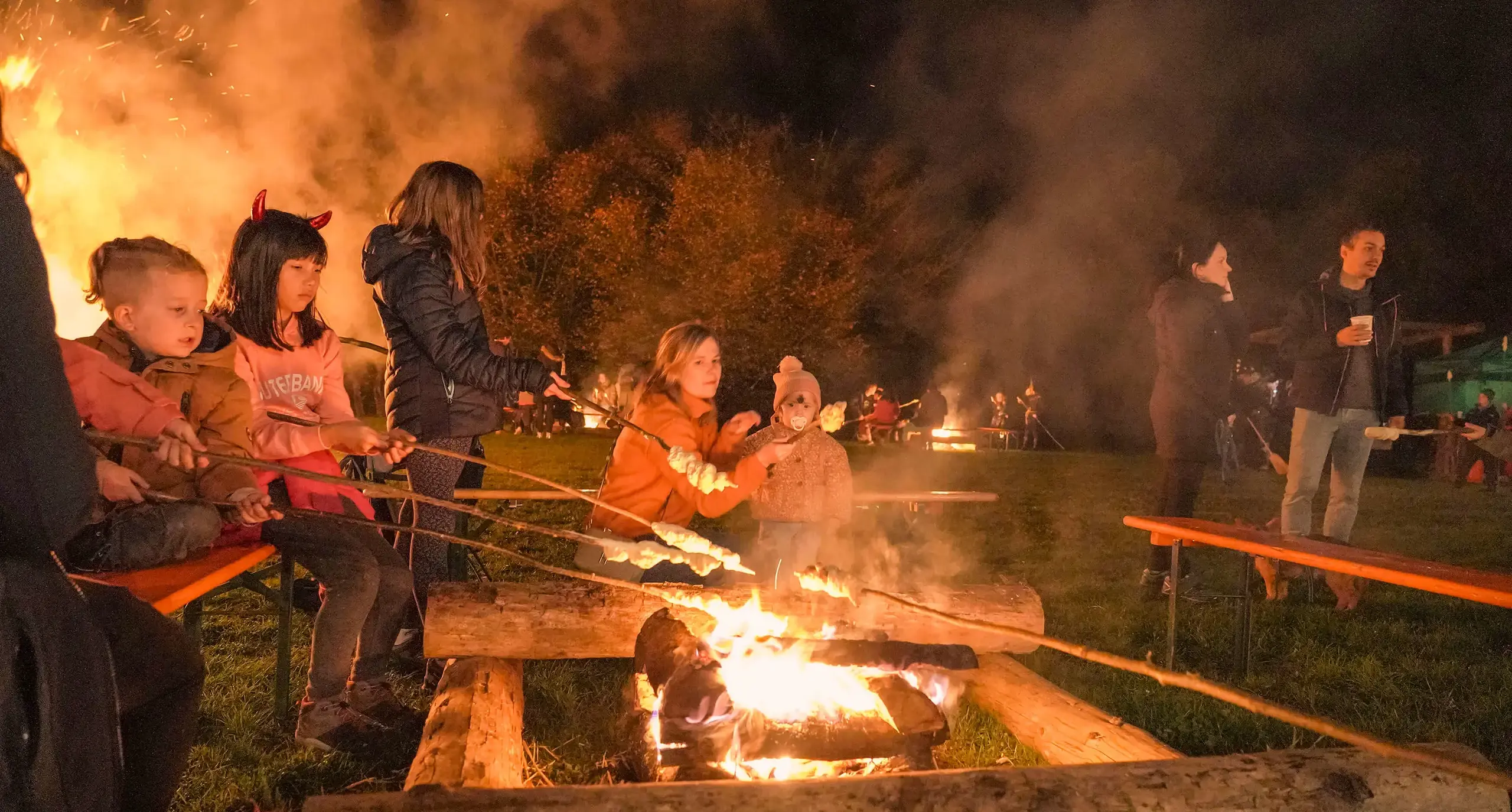News
Inside Luxembourg: Trauliicht
21 October 2025
By Isabelle Frisch-Koopmans
As an October child growing up in Luxembourg City, I’ve always felt a deep love for autumn. Not for spooky lanterns – Trauliicht had faded from memory in my neighbourhood back then – but for the colours, the scents of ripe fruit and damp earth, and the gentle warmth of the midday sun.
Even without turnip lanterns, the season held its own magic. This week, I invite you to discover a tradition that once flickered most brightly in the hills of the Ardennes, yet cast its glow across other regions too – Trauliicht.
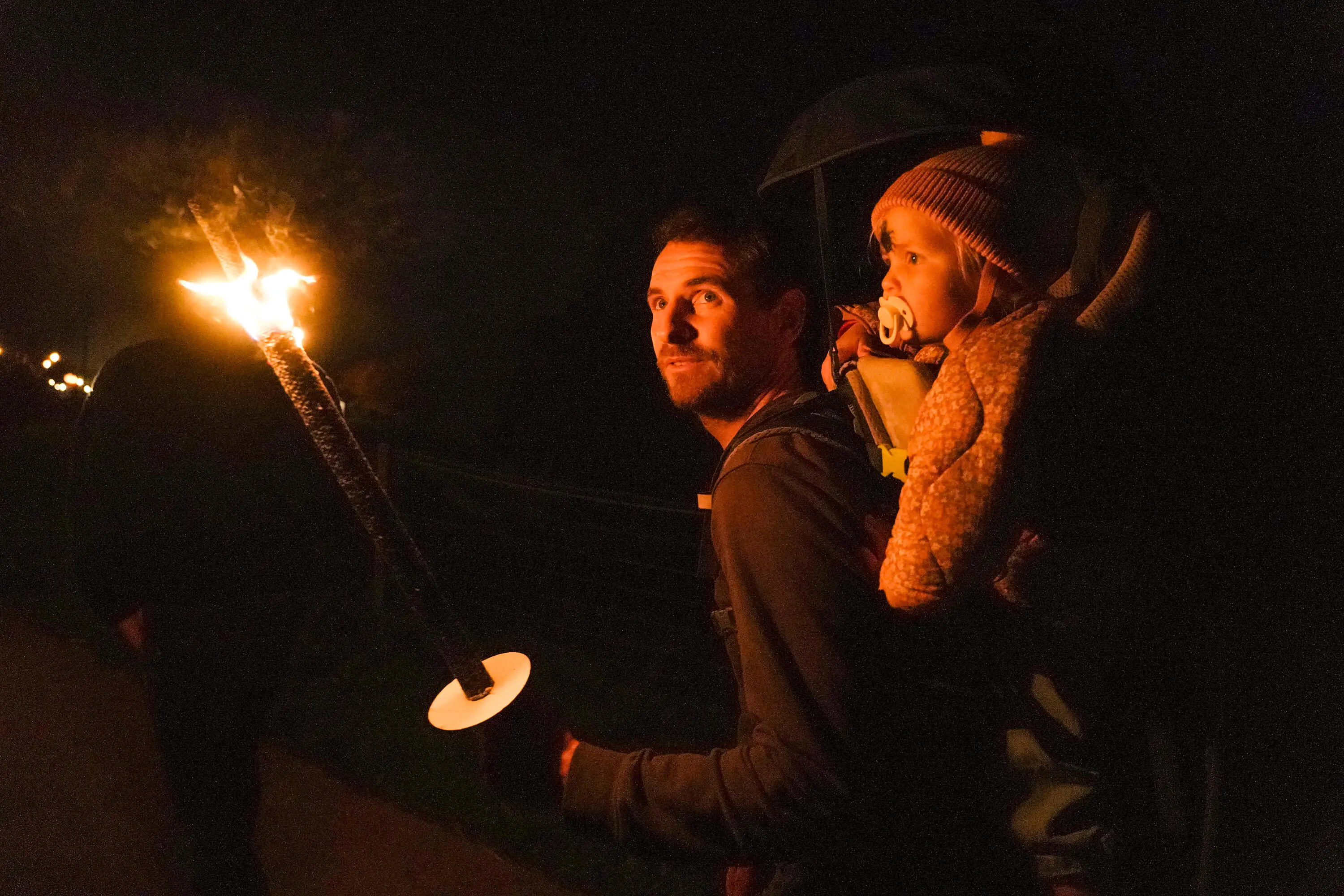
Munshausen Trauliicht © Alongtheroad.be
From Celtic roots to Halloween lanterns
Did you know that the well-known festival of Halloween actually has its origins in ancient European traditions, including one still celebrated in Luxembourg today called Trauliicht?
The name Halloween comes from All Hallow’s Eve, the night before All Saints’ Day (also known as All Hallows’ Day). But long before this Christian holiday existed, people across Europe were already celebrating the end of the harvest and the beginning of winter with rituals meant to protect themselves from spirits and darkness.
Celtic origins – Samhain
The Celts, who lived in regions including Luxembourg, Ireland, Scotland and northern France, celebrated Samhain around the end of October. It marked the end of summer and the start of the dark season. They believed that during Samhain, the boundary between the world of the living and the dead became thin. Spirits, ghosts and even fairies could cross into our world.
To protect themselves people:
- lit fires to keep spirits away,
- dressed in scary costumes to confuse or frighten them,
- and placed food and drink outside to appease wandering souls.
One powerful symbol was the lantern made from a turnip, with a glowing coal inside – meant to scare off evil spirits. This is the origin of the lantern tradition we now know as Trauliicht.
The word Samhain itself comes from the Celtic samani or samoni, meaning “union” – the union of the worlds of the living and the dead. It can also be interpreted as sam (summer) and fuin (end), literally “the end of summer.”
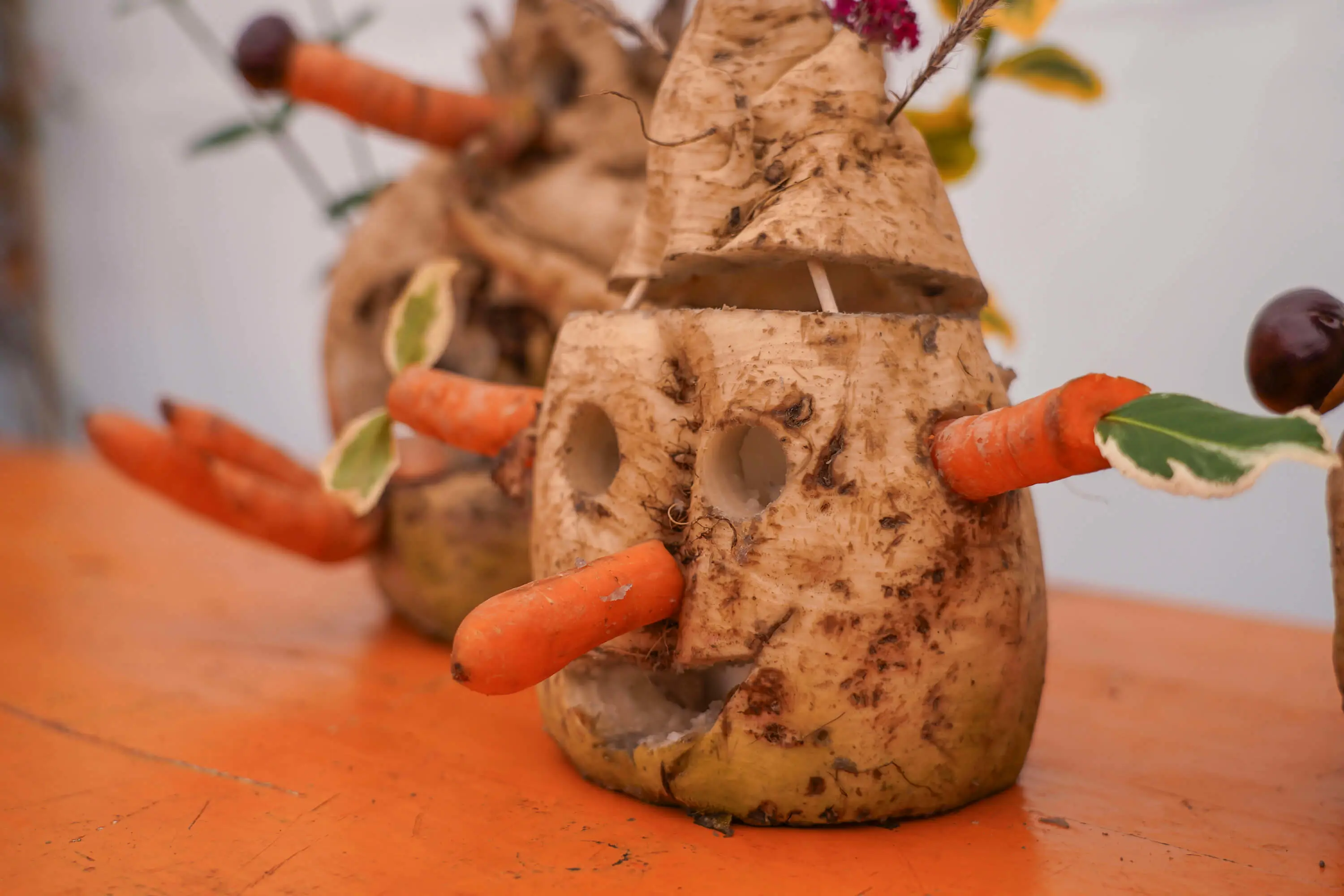
Munshausen Trauliicht © Alongtheroad.be
From Turnips to Pumpkins
In Luxembourg, Trauliicht is traditionally celebrated in the rocky hills of the Ardennes, especially in the north of the country. It was widespread until the 1970s and saw a revival in the 1990s, when the American version of Halloween became popular.
Instead of pumpkins, children in Luxembourg hollow out a beetroot or turnip, carve a scary face, place a candle inside and parade it through the village on a stick. It’s a fun and spooky tradition that connects us to our ancestors.
Interestingly, in Scotland, people also carved lanterns from turnips – and they still do today, as a Scottish colleague once shared with me.
When Irish and Scottish immigrants moved to North America, they brought these traditions with them. But since turnips were hard to find, they used pumpkins, which were larger and easier to carve. Over time, this evolved into the Halloween we know today – with costumes, trick-or-treating and pumpkin lanterns.
Jack O’Lantern and Christian Influence
One legend tells of Jack, who tricked the devil and was doomed to wander the earth with only a burning coal inside a turnip to light his way. This became the Jack O’Lantern, believed to ward off evil spirits.
In 837 AD, Pope Gregory IV tried to Christianize these pagan customs by declaring All Saints’ Day on 1 November and calling the night before All Hallows’ Eve, which eventually became Halloween.
A Shared Tradition
While Halloween has become a commercial celebration in many countries, Trauliicht remains a more traditional and local festival in Luxembourg and the Greater Region. It reminds us of our deep cultural roots and the ancient ways people tried to understand and protect themselves from the mysteries of the world.
So, whether you’re carving a turnip or a pumpkin, dressing up or lighting a candle, you’re part of a tradition that’s thousands of years old and shared across many cultures!
Where to celebrate Trauliicht
Robbesscheier Nature Center – Munshausen
Trauliicht Weeks: 25 October to 4 November 2025
Evenings: Saturday, 25 October at 19:15 | Tuesday, 4 November at 18:15
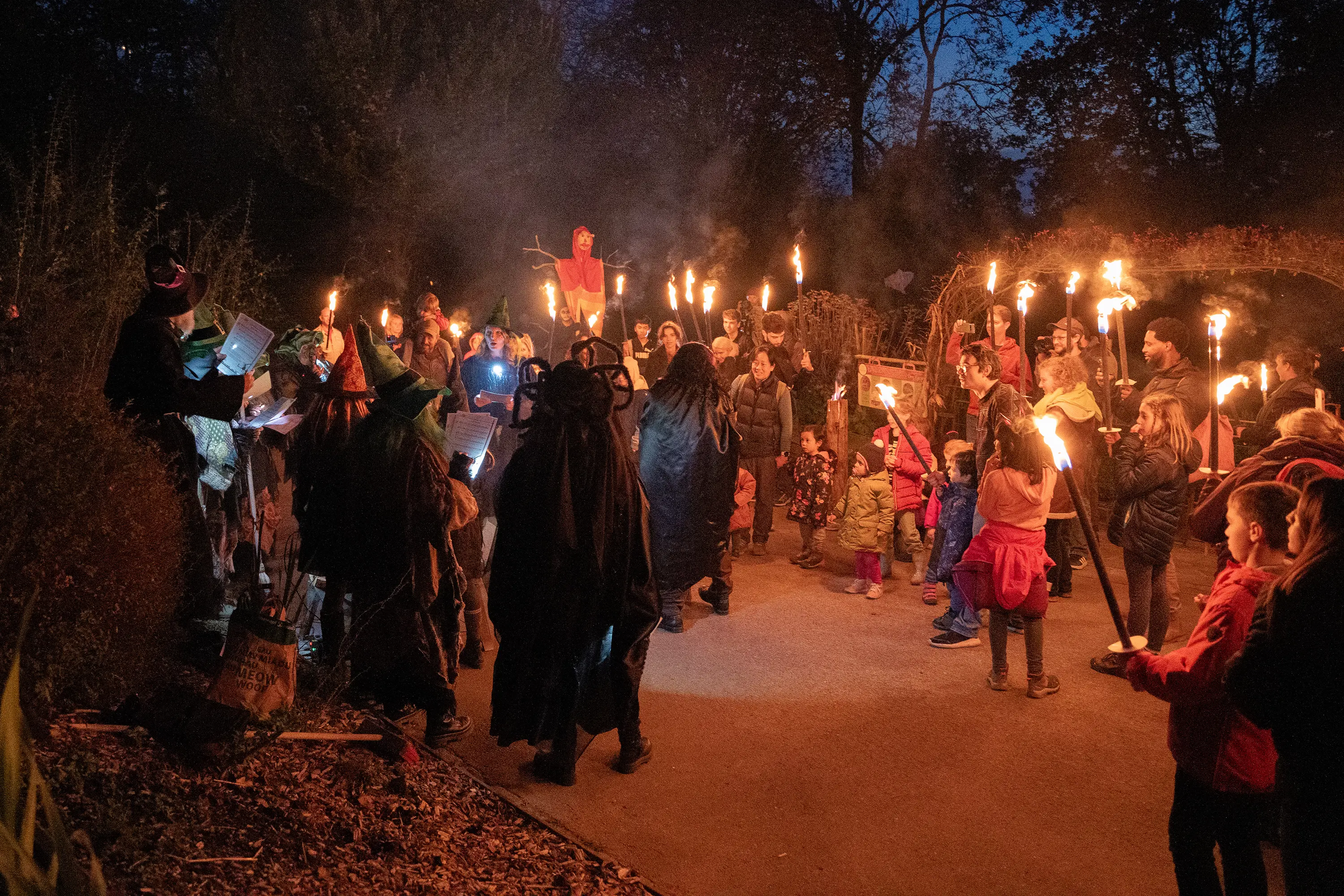
Munshausen Trauliicht 2024 © Visit Éislek-Hype
Workshops and activities
- Turnip lantern carving
- Baking “ghost bread”
- Crafting ceramic monsters and nature decorations
- Horse-drawn carriage rides, animal feeding, creative stations
Food highlights
Pumpkin soup, potato fritters, marble cake, à la carte options
Location and details
https://www.robbesscheier.lu/fr/fiche-activite/manifestations/semaines-betteraves
A Possen Museum – Schengen
Trauliicht evenings: Saturday, 25 October at 19:15 | Tuesday, 4 November at 18:15
Creative workshop for children
Saturday, 25 October, from 14:00 to 17:00
For children aged 6–12
Location and details
https://musee-possen.lu/25-oktober-de-brauch-vum-trauliicht-e-kreativen-atelier-fir-kanner/
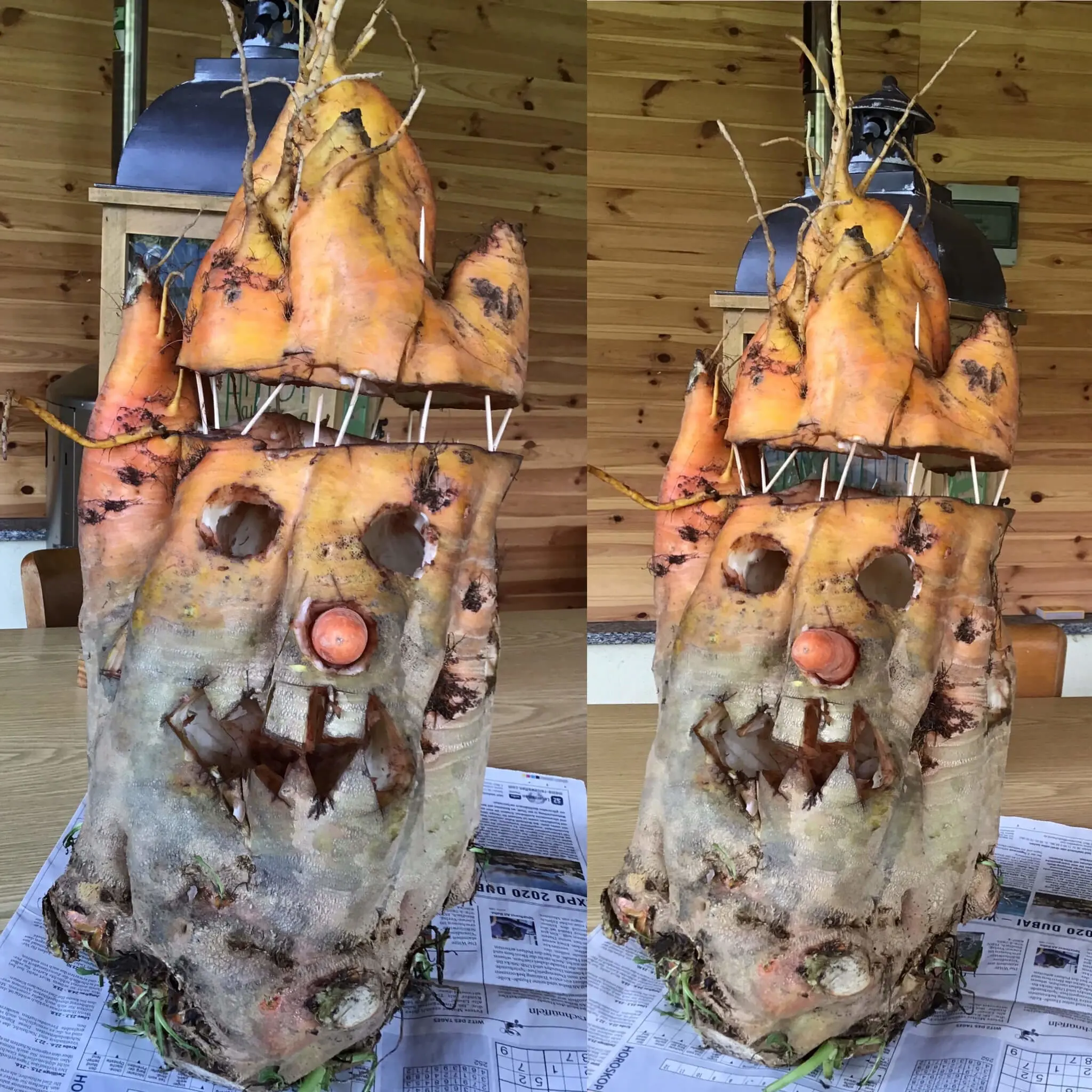
Make your own Trauliicht at home
- Tutorial 1: Trauliicht basteln mit Kindern (YouTube)
- Tutorial 2: Trauliicht schnitzen mit Robbesscheier (YouTube)
Recipe: Autumn potato and pumpkin soup
Inspired by Ketty Thull
For this edition, I’ve adapted a classic recipe from Ketty Thull’s Luxembourgish cookbook: the beloved Gromperenzopp (potato soup). I’ve added pumpkin, a touch of nutmeg and crispy croutons to give it a warm, seasonal twist – perfect for chilly October evenings.
Ingredients
Serves 4–6
- 500 g potatoes, peeled and diced
- 300 g pumpkin (or butternut squash), peeled and diced
- 1 onion, chopped
- 1 leek, sliced
- 1 celery stalk, chopped
- 1.5 L vegetable or chicken broth or coconut milk. If you use coconut milk, leave out the cream / crème fraiche.
- 1 tbsp butter
- Salt, pepper, nutmeg to taste
- Optional: cream or crème fraîche for serving
- Optional: toasted bread cubes or pumpkin seeds for garnish
Instructions
- In a large pot, melt butter and sauté onion, leek and celery until soft.
- Add potatoes and pumpkin. Stir briefly.
- Pour in broth, bring to a boil, then simmer for 25–30 minutes.
- Blend until smooth, season with salt, pepper and nutmeg.
- Serve with a swirl of cream and garnish with croutons or seeds.
This is my own seasonal variation on Ketty Thull’s classic soup – simple, comforting, and full of autumn flavour.
Language Fun – Word of the Week
Luxembourgish: Trauliicht → [ˈtʀɑʊliːɕt]
German: Traulicht
English: Turnip lantern
Try it in a sentence: “Mäin Trauliicht flackert an der Nuecht wéi eng kleng Geeschterluucht.”
It means: “My turnip lantern flickers in the night like a little ghost light.
Whether you’re carving a turnip or a pumpkin, dressing up or simply lighting a candle, I hope this story brings a little magic to your October. Traditions like Trauliicht remind us that even in the dark, there is light – and that the stories we pass on are the ones that keep glowing.
Léif Gréiss
– Isabelle Frisch-Koopmans
- This article is part of our “Inside Luxembourg” series, celebrating the stories, flavours and traditions that shape our local culture.
Answers:
1B Turnip
2B To scare away spirits
3B Celts
4C In some villages in the Ösling region (eg. Robbesscheier)
5C Autumn potato and pumpkin soup

